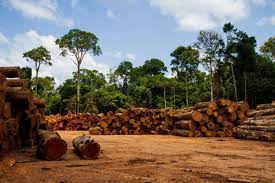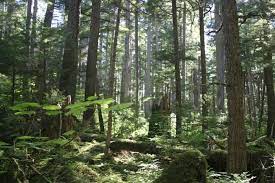Conflicts in Resource Conservation and Multiple Use Value of Natural Resources
The central objective of resource conservation or management in various countries of the world have for long over-looked the role of local people in the conservation process.
The consequences have been the series of conflicts experienced in such areas which have a tendency to undermine the conservation drive not only for the present but also, for the future generations.
This article will cover factors that lead to conflicts in resource conservation, its management and control for effective conservation.
Resource Conservation
The term “conservation” came into use in the late 19th century and referred to the management, mainly for economic reasons, of such natural resources as timber, fish, game, topsoil, pastureland and minerals. In addition it included the preservation of forests (forestry), wildlife (wildlife refuge), parkland, wilderness, and watersheds.
However, natural resource conservation has a history that extends prior to the age of conservation. Consequently, resource ethics grew out of necessity through direct relations with nature.
Regulation or communal restraint became necessary to prevent selfish motives from taking more than could be locally sustained, therefore compromising the long-term supply for the rest of the community.
This social dilemma with respect to natural resource management is often called the “Tragedy of the Commons”. From this principle, conservation biologists can trace communal resource based ethics throughout cultures as a solution to communal resource conflict.
Efforts to conserve and protect global biodiversity and natural resources are a recent phenomenon which had resulted in conflicts in resources conservation.
Land Use Pressure
Land is needed for agriculture, housing, industrial development, military establishments, and so many infrastructural projects.
Hence, it becomes difficult to understand the rationale for the conservation of large areas of biological significance exclusively for wild life conservation.
Conserved areas of natural resources face various land use problems such as deforestation, wildlife poaching, illicit loggings, uncontrolled bush fires, shifting cultivation and overgrazing.
The reason is not far-fetched as the land environment is faced with dense population pressures, inequality and access to natural resources.
For example the Queen Elizabeth National Park in Uganda is an example of a conserved area that is increasingly been affected by the various land pressures for conversion from a forest land to cropland and its need to meet the food requirements of her inhabitants.
Conflicts over land-use are based on the many socioeconomic activities that are performed within the area conserved namely fishing, cultivation, livestock grazing, hunting, collection of firewood and the harvesting of salt.
Conflicts within these environments are based on the access restrictions which prohibit resources exploitation. Again, within the Volcanoes National Park of Rwanda are communities that believe that the rationale behind the designation of conservation areas is to forcefully take possession of their lands.
Read Also : Instruments of Environmental Protection
These communities who more often than not are preoccupied with the availability of land for their agricultural activities believe that conserved area within their territories is an indication that enough lands would not be available for their children.
As a result, little consideration is given to the aesthetic, scientific or moral objectives of the protection of the conserved environment. The drive to protect the conserved lands as a heritage for the future is the motivation behind these conflicts.

Similarly, the wildlife of the Serengeti National Park in Kenya is threatened by the increasing human population which exert pressures on the conversion of the park to agricultural farmlands.
These pressures lead to land and political conflicts among the ethnic groups within the park. The need for the conservation efforts was the consequence of unsustainable exploitation of forest resources characterized by unmanaged legal and illegal harvesting of fuel wood, timber, poles, bamboo, and medicinal herbs.
Other factors include a high dependence on agriculture, a lack of alternative non-land sources of livelihood, land scarcity as evidenced by increasing population-land ratio, low-level of productivity per unit area of cultivated land, economic, social and political pressure for the removal of forests to human settlements or other land projects.
Multiple Use Value of Natural Resources
The resources obtained from the natural environment such as trees, plant and wildlife species are employed on one hand for consumption, habitat, soil productivity maintenance, medicine, cultural development, economic security etc.
On the other hand, the same environment is subjected to both small and large scale projects which frequently exert undue pressure on its life supporting capacity.
For instance, many of the wild-life reserves in Europe and Canada are tourism and recreation-oriented while the task of conservation is secondary.
The resultant effect of this separation is that as more areas of the park and sanctuaries are demarcated to suit recreational activities, a lot of financial expenses are used to maintain recreation.
Consequently, severe degradation of the natural wild-life habitat occurs which in turn does not aid the goal of conservation. It is necessary to have an understanding of the values attached to natural resource use as found in such environments as conserved areas because it largely determines the success of conservation goals.
Value conflicts frequently result when controversies surround various resource uses. For example the Nazinga Game Ranch in Burkina Faso is a protected area in which wild animals are harvested to generate income.
Similarly, the incomes generated from the sale of animal products, sport, hunting and tourism are used by the park administrators to carry out administrative expenses, research and law enforcement for the protected area.
This type of management reflects a clear case of value inconsistency which provides breeding grounds for conflicts as the value use of the reserve is contradicted.
The values attached to conservation by a society often depend on moral and ethical factors such as interest in the survival and welfare of the present resource status and the willingness to protect these resources for the future.
The World Development Report in 1992 regards the environment-development issue to be complimentary in nature, particularly as the absence of one factor will ultimately result in the failure of the other.
For example, the inadequate conservation of the natural environment can only result in a poor quality of development and vice versa, such as the development of large projects as hydroelectric power project, the over exploitation of the African natural resources and the establishment of reserves and parks as against the negative cultural losses of exclusion of communities from their ancestral lands.
Conflicts of Ownership
The objectives behind the conservation scheme is to conserve natural resources for long- term benefits, while the concern of the inhabitants of the conserved areas is the need to have a means of livelihood for survival.
The different functional interpretations given to conserved areas have generated the varying degrees of conflicts experienced.
Local people regard the conserved environment as their rightful property and rather view the authorities as intruders on their land and as such would willingly go to extraneous lengths to preserve their heritage.
Lewis (1993) identified the major reason for the conflicts to include people in such areas having substantive needs which are contrary to the different goals of governmental authorities.
This is indicated by the needs of indigenous people for grazing lands, firewood, building materials, medicinal plants and land for hunting as opposed to the conservation needs of the authorities for sustainability.
A study revealed that the 82% of the set-aside conservation park land in the Aceh Tenggara District, Indonesia have resulted in more rapid forest destruction resulting from illegal logging and agricultural encroachment.
The situation was further worsened by the imposition of severe threats to life of the Park Officials who attempted to report cases of encroachment to the authorities.
Similarly, the establishment of the Khao Yai National Park in Thailand and the adoption of enforcement measures met with stiff opposition and hostility which culminated in armed clashes between the workers of The Royal Forestry Department and the indigenous people.
Cases of loss of lives on both sides were reported, notwithstanding the illegal activities of poaching, logging, etc. still persisted such that between January – April of 1986, over 258 poachers had been arrested.
From the case studies of the two parks examined above, it is seen that the unsuccessful administration of these parks evidently stem from a lack of cooperation between the park officials and the indigenous people.
The Government Department paid little attention to the needs of the indigenous people in terms of local settlement, and subsistence resource, and the use of their conserved area, as a result, conflict ensued.
The ownership of land and sea within protected areas is one of the key factors responsible for conflicts within protected areas.
This is more so in sites having high human population density and areas which receive an influx of migrants from surrounding regions.
Thus access to land constitute a significant factor in conflict generations between indigenous people and protected area authorities.
Human Population Pressure and Consumption
The impact of the growing world population on land, water, energy and biota resources are real and indeed overwhelming. Clear scientific evidence which suggests worldwide problems of food availability have emerged.
More humans than ever before have covered the earth with their urbanization, highways and other activities. This imperils the availability of food resources. Each year, more than 10 million hectares of valuable cropland are degraded and lost because of soil erosion.
In addition, an added 10 million hectares are being destroyed by salinization resulting from improper irrigation. The world’s soil erosion and salinization account for the major losses in productive cropland due to human population pressure creating conflicts in the conservation of natural resources.
Adequate quantities of freshwater which support the very survival of every human, plant, and animal on earth are not available in many regions of the world because of too much dependence by the human population. Indeed, more than 70% of all available freshwater is used in world agriculture for this same reason.
This confirms the importance of water and the role of irrigation in world food production. For instance water is being removed in some aquifers in the Western United States ten times faster than the recharge rate and nearly 20% of all the fossil energy used in the United States is devoted to supplying food for her population need.
The world supply of oil has peaked because of the population pressure of the world and the remaining oil will continue to decline as use continues. Reliable projections are that by 2040 the world supply of oil will be more than 60% depleted. As oil resources diminish worldwide, costs increase.
In the United States for example, supplies of natural gas and coal are expected to last fifty to one hundred years, depending on how fast they are substituted for oil and how fast the U.S. population grows.
However, the processing of coal into oil and gas will contribute to air pollution unless technology is developed to help overcome these serious consequences. This rate of consumption will continue to increase as the population continues to grow and further diminish fossil energy reserves.
This calls for renewable energy sources that must be investigated and priority given to their development and use. These renewable energy sources would occupy another additional land area. Some of this required land would compete with vital cropland, pasture and forest land.
Read ALso : How to Reduce the Amount of Wastes Produced
Clearly, the current energy-population imbalance will impose drastic changes in energy, land, and water use. Achieving energy conservation and efficiency of all energy sources is paramount but population pressure has been a conflict for its conservation.
To halt the escalating imbalance between expanding population numbers and the earth’s essential natural resources, human beings must control their numbers. At the same time, they must make efforts to conserve the use of cropland, freshwater, energy, biodiversity and the other life-supporting environmental resources.



